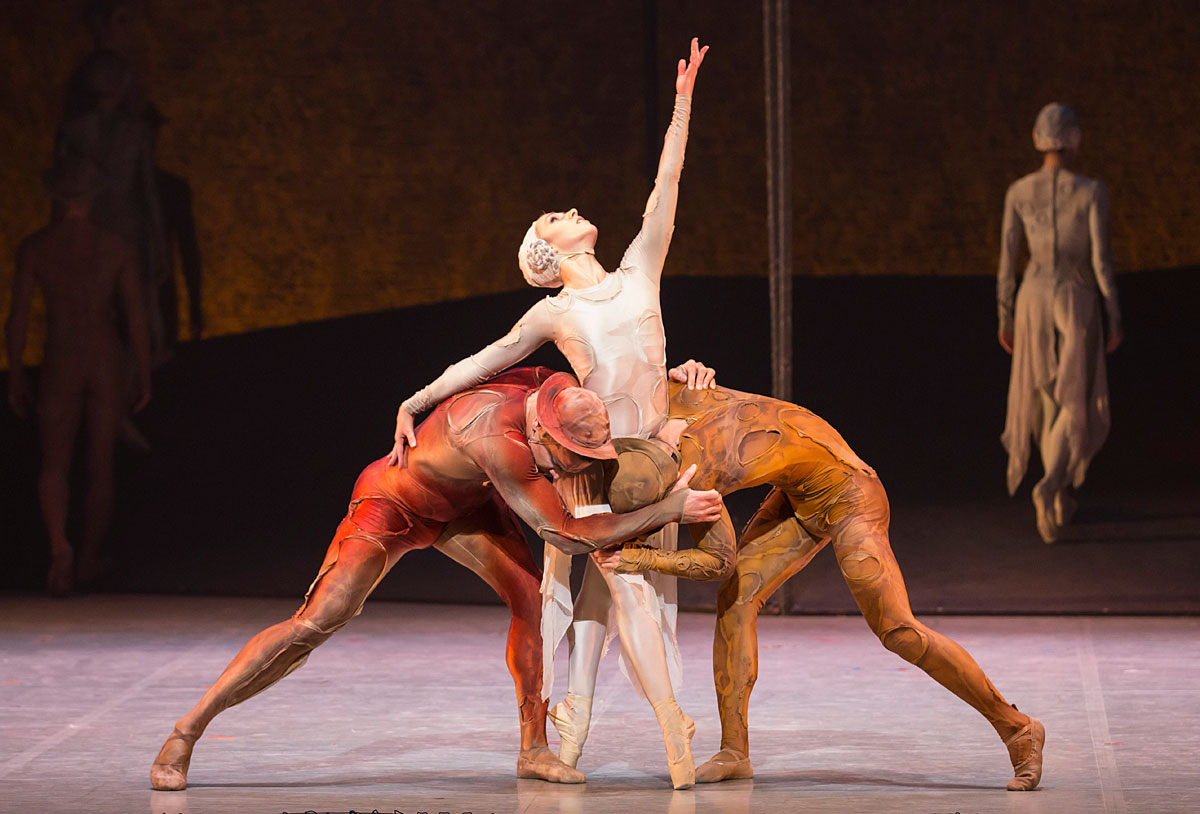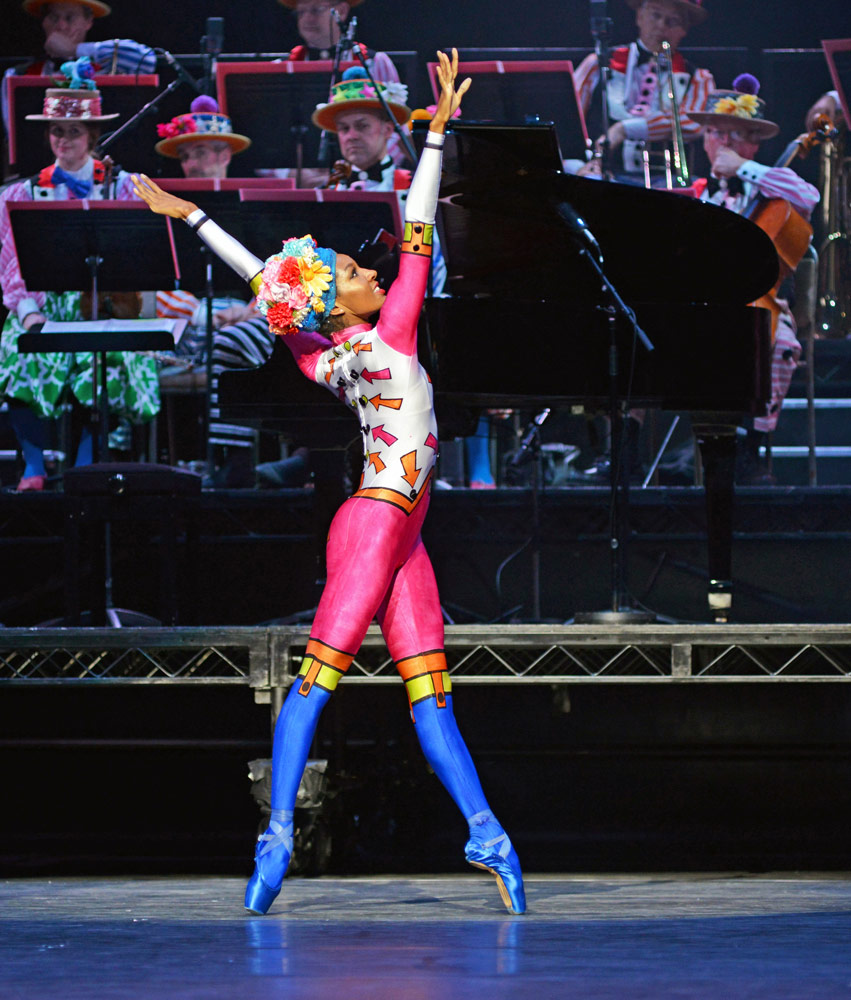
© Dave Morgan, courtesy the Royal Opera House. (Click image for larger version)
Kenneth MacMillan: a National Celebration
Northern Ballet: Gloria
Royal Ballet: The Judas Tree
Royal Ballet + BRB, ENB, NB & SB guests: Elite Syncopations
★★★★✰
London, Royal Opera House
26 October 2017
Gallery of Judas Tree pictures by Dave Morgan
(+ some Elite Syncopations pictures in this gallery)
www.roh.org.uk
Northern Ballet (NB) took on the challenge of appearing in the celebratory MacMillan season at the Royal Opera House by performing his Gloria. Since its creation in 1980, the Royal Ballet’s production has been able to draw on singers and musicians from its sister company, the Royal Opera. Northern Ballet, without such in-house resources, was obliged to perform Gloria in Bradford earlier this month to a recording of Poulenc’s music. (His publishers would not allow the use of a reduced orchestra in smaller theatres on tour.)

© Emma Kauldhar. (Click image for larger version)
When NB’s dancers gave Gloria on the large Covent Garden stage, the first time ever the company has appeared there, the well-known and trusted Tom Seligman conducted the Royal Opera House orchestra and chorus. Sarah-Jane Lewis, associated with the ROH Jette Parker programme, sang the soprano role. The dancers rose superbly to the occasion, adjusting to the steep rake of Andy Klunder’s original set, with its evocation of World War I trenches.

© Lauren Godfrey. (Click image for larger version)
The company understands the irony of the ballet’s setting as a ceremony lamenting the waste of life in war, while the singers glorify God in the highest. There is no need for the dancers to emote; they are the ghosts of a lost generation, and the choreography tells their stories for them. The main characters, based on Vera Brittain’s memoirs, Testament of Youth, are herself, her brother and her fiançé, both killed in the First World War. The roles were taken by Antoinette Brooks-Daw as the spirit of Vera, with Riku Ito and Javier Torres as the soldiers she mourned.

© Lauren Godfrey. (Click image for larger version)
Brooks-Daw was a silvery wraith, linking the two men in their love for her. She drooped weightless in Torres’s arms in premonition of their deaths. Ayami Miyata, the carefree girl thrown around by three men, perhaps represented the younger, unaware version of Vera. Ito was the death-defier, leaping and tumbling until he, too, had to obey the summons of the chorus’s final Amen – so be it. The finale catches the audience by the throat.

© Lauren Godfrey. (Click image for larger version)
Requested not to applaud until the end, audience members erupted during the curtain calls, endorsing Northern Ballet’s pride in honouring MacMillan’s elegiac ballet.
Although The Judas Tree takes a far savager view of humanity, the two ballets have a surprising amount in common – not least, the Christian imagery. The gang of men in The Judas Tree are like conscripted soldiers, ready to fight. Nobody is ever alone in either ballet: in their communities, someone is always present, watching in the background. An accusing finger is pointed at spectators in Gloria; in The Judas Tree, the Foreman’s outstretched arm threatens those who rile him. A quotation from Kahlil Gibran in The Judas Tree programme warns that ‘the wrongdoer cannot do wrong without the hidden will of you all’. Guilt is communal.

© Dave Morgan, courtesy the Royal Opera House. (Click image for larger version)
In Thursday’s cast, Bennet Gartside as the Foreman had the arrogant attitude of a leader exerting his authority over the lower orders. He’d appear indifferent to their shenanigans, reading his newspaper until provoked to intervene. Then he’d lose it, unleashing violence beyond his control – all the more unsettling because (unlike Thiago Soares in the role) he didn’t appear deranged. Goaded beyond endurance, he attempted to kill his taunting girlfriend, blamed her saviour (Matthew Ball) and set the mob onto him. He took no part in the lynching, but suffered unbearable guilt. Gartside made the Judas role almost comprehensible – a fine reading.

© Dave Morgan, courtesy the Royal Opera House. (Click image for larger version)
Melissa Hamilton as the woman, Magdalene and Madonna, is so physically pliant that she struggled at the start to assert herself as a dominatrix, walking over the men. Lauren Cuthbertson had more innate dignity in the role; Hamilton risked seeming a victim rather than a survivor. Ball and Calvin Richardson, as the Jesus and Peter figures, commanded our sympathy as the ghastly casualties of mob violence.

© Dave Morgan, courtesy the Royal Opera House. (Click image for larger version)
A long interval made the transition to the ragtime frolics of Elite Syncopations not too jarring a contrast. Dancers from all five major British ballet companies took part, some doubling up roles in identical outfits so that identifying dancers was confusing. The stand-out solo in both the casts I saw was to the Calliope Rag (Monica Mason’s original role). Precious Adams from English National Ballet brought the house down with her confident insouciance, knowing just how to play with the music and the audience. Laura Morera brought her experience of MacMillan’s bad girl roles to her mischievous account of the role, more of a team player than Adams in acknowledging the others on stage.

© Dave Morgan, courtesy the Royal Opera House. (Click image for larger version)
Both Yasmine Naghdi and Akane Takada were glamorous as the leading lady in gleaming white lycra, with strategically placed embellishments. Riku Ito and Kevin Poeung (both Northern Ballet) had fun in alternate casts in the Friday Night number. Tall Marge Hendrick and shorter Constant Vigier from Scottish Ballet danced the comic Alaskan Rag with brio in both casts. Matthias Dingman got to dance the sweet duet in pink to The Golden Hours with either Karla Doorbar or Maureya Lebowitz (all three from Birmingham Royal Ballet).

© Dave Morgan, courtesy the Royal Opera House. (Click image for larger version)
Rehearsals with ever-changing casts as invited companies went on tour must have been testing. The Royal Ballet provided the corps and trios and quartets of soloists (and principal dancers), amongst whom James Hay, Yuhui Choe and Elizabeth Harrod were conspicuous. With the gallant band on stage, Elite Syncopations provided a fun finish to an otherwise sombre evening, and a fine send-off for guest dancers from around the United Kingdom.

















You must be logged in to post a comment.